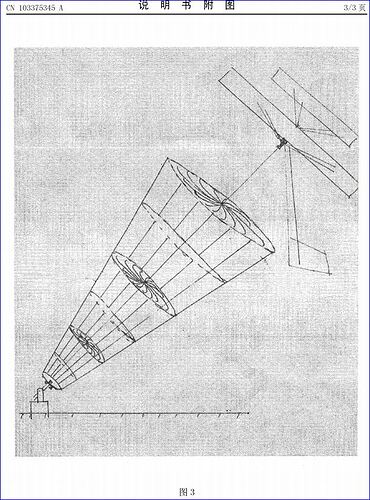This is an interesting study for some means to scale. I think @Rodread more or less uses this method for his rotary device by implementing rings and rotors scaling up from the bottom (where the generator is settled) and the top (before the lifter kite). Another example of rotary device is given below, coming from the old forum:
Now a question would be: what practical apply could be found for a non rotary device if it exists, apart from lifter kites?
K = 2 (mass increasing with area, so mass / area ratio being steady).
Scaling exponents used by Markus Sommerfeld perfectly work and are currently used. There is no reason to change them. The basis for a curve of scaling is the span and the mass of the wing.
